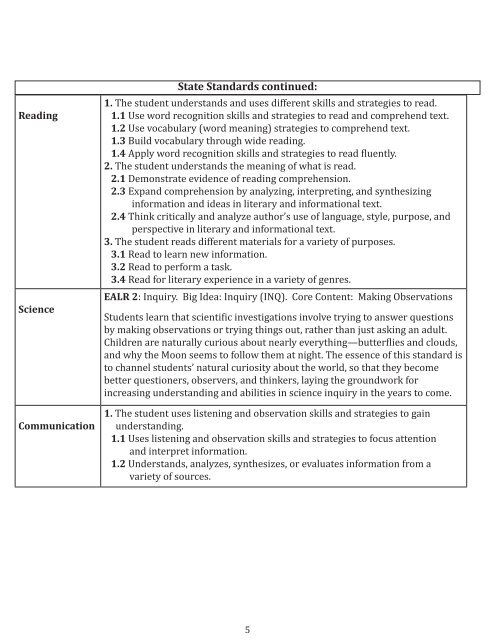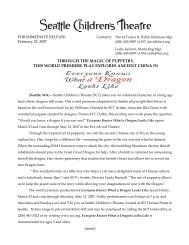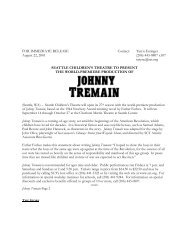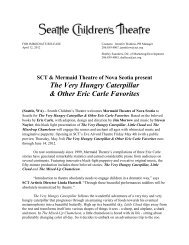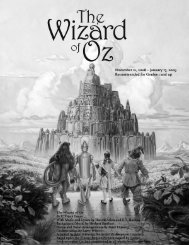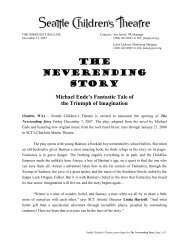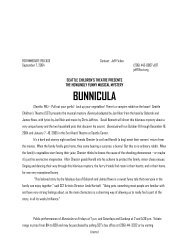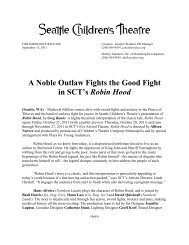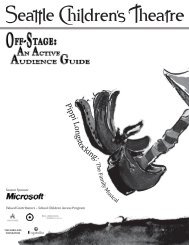Harold and the Purple Crayon - Seattle Children's Theatre
Harold and the Purple Crayon - Seattle Children's Theatre
Harold and the Purple Crayon - Seattle Children's Theatre
- No tags were found...
Create successful ePaper yourself
Turn your PDF publications into a flip-book with our unique Google optimized e-Paper software.
ReadingScienceCommunicationState St<strong>and</strong>ards continued:1. The student underst<strong>and</strong>s <strong>and</strong> uses different skills <strong>and</strong> strategies to read.1.1 Use word recognition skills <strong>and</strong> strategies to read <strong>and</strong> comprehend text.1.2 Use vocabulary (word meaning) strategies to comprehend text.1.3 Build vocabulary through wide reading.1.4 Apply word recognition skills <strong>and</strong> strategies to read fluently.2. The student underst<strong>and</strong>s <strong>the</strong> meaning of what is read.2.1 Demonstrate evidence of reading comprehension.2.3 Exp<strong>and</strong> comprehension by analyzing, interpreting, <strong>and</strong> syn<strong>the</strong>sizinginformation <strong>and</strong> ideas in literary <strong>and</strong> informational text.2.4 Think critically <strong>and</strong> analyze author’s use of language, style, purpose, <strong>and</strong>perspective in literary <strong>and</strong> informational text.3. The student reads different materials for a variety of purposes.3.1 Read to learn new information.3.2 Read to perform a task.3.4 Read for literary experience in a variety of genres.EALR 2: Inquiry. Big Idea: Inquiry (INQ). Core Content: Making ObservationsStudents learn that scientific investigations involve trying to answer questionsby making observations or trying things out, ra<strong>the</strong>r than just asking an adult.Children are naturally curious about nearly everything—butterflies <strong>and</strong> clouds,<strong>and</strong> why <strong>the</strong> Moon seems to follow <strong>the</strong>m at night. The essence of this st<strong>and</strong>ard isto channel students’ natural curiosity about <strong>the</strong> world, so that <strong>the</strong>y becomebetter questioners, observers, <strong>and</strong> thinkers, laying <strong>the</strong> groundwork forincreasing underst<strong>and</strong>ing <strong>and</strong> abilities in science inquiry in <strong>the</strong> years to come.1. The student uses listening <strong>and</strong> observation skills <strong>and</strong> strategies to gainunderst<strong>and</strong>ing.1.1 Uses listening <strong>and</strong> observation skills <strong>and</strong> strategies to focus attention<strong>and</strong> interpret information.1.2 Underst<strong>and</strong>s, analyzes, syn<strong>the</strong>sizes, or evaluates information from avariety of sources.5


